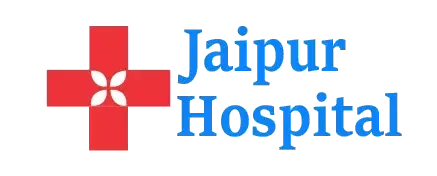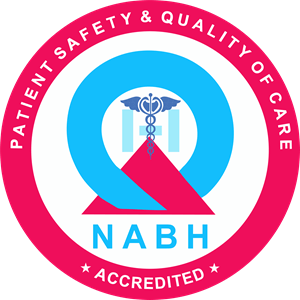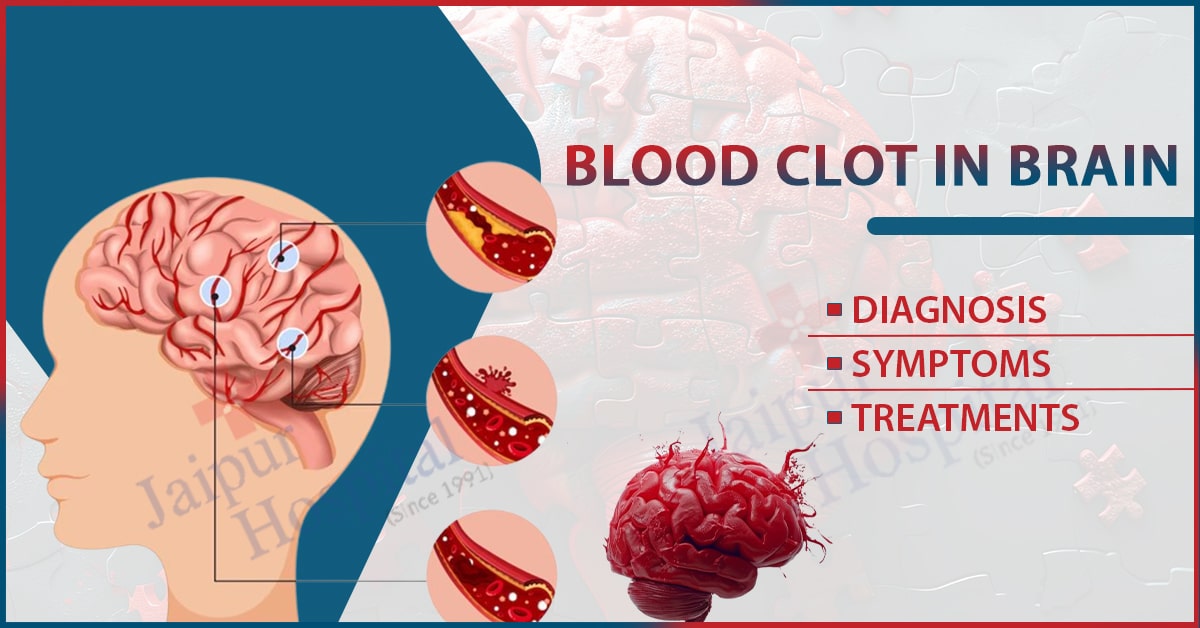A blood clot in the brain, also known as cerebral thrombosis or embolism, occurs when a blockage forms in a blood vessel, preventing normal blood flow and depriving brain tissue of oxygen. This can lead to serious complications, including stroke, brain damage, and in severe cases, death. Blood clots can form due to various reasons, including head injuries, underlying health conditions, or blood disorders. In this discussion, we will explore the causes and risk factors associated with brain clots, the symptoms that indicate their presence, various diagnostic methods used for detection, the available treatment options, and key strategies for prevention and lifestyle modifications to reduce risk.
What is a Blood Clot in the Brain?
A blood clot in the brain, scientifically referred to as a cerebral thrombus or cerebral embolism is a mass of coagulated blood that forms within a blood vessel in the brain, leading to partial or complete obstruction of blood flow. This can result in ischemia, where oxygen and nutrient supply to brain tissue is restricted, potentially causing neuronal damage. If the clot originates locally in a cerebral artery, it is termed a thrombus, while a clot that travels to the brain from another part of the body is called an embolus. This condition is a critical factor in the development of ischemic stroke.
Types of Blood Clots in the Brain
Blood clots in the brain can be categorized into two main types based on their origin and formation:
- Cerebral Thrombosis:
- A thrombus is a blood clot that forms directly within a blood vessel of the brain, often in arteries already narrowed by atherosclerosis (plaque buildup).
- The clot develops at the site of damage in the vessel wall and obstructs blood flow to the brain, leading to ischemic stroke. This type is more common in individuals with risk factors like hypertension, diabetes, and high cholesterol.
- Large artery thrombosis (in major vessels like the carotid or vertebral arteries) and small vessel thrombosis (lacunar strokes).
- Cerebral Embolism:
- An embolus is a blood clot or other debris that forms elsewhere in the body (often in the heart or large arteries) and travels to the brain through the bloodstream, lodging in a cerebral blood vessel.
- The embolus blocks the brain’s blood flow suddenly, which can cause an ischemic stroke. This is commonly associated with conditions like atrial fibrillation, heart valve disease, or other cardiac disorders.
- Emboli from the heart (cardioembolic stroke) may result from arrhythmias or valvular issues.
Causes of Blood Clot in the Brain
Several factors can contribute to the formation of a blood clot in the brain, which can either originate locally (thrombus) or travel from another part of the body (embolus). Here are the primary causes:
- Atherosclerosis: Plaque buildup in arteries, leading to narrowing and clot formation.
- Cardiovascular Conditions: Issues like atrial fibrillation, heart valve disease, and heart failure can cause clots that travel to the brain.
- Head Trauma: Severe injury can damage blood vessels, triggering clot formation.
- Blood Disorders: Conditions like thrombophilia and polycythemia increase clotting risk.
- Lifestyle Factors: Smoking, obesity, and a sedentary lifestyle can promote clot formation.
- Hormonal Medications: Oral contraceptives and hormone therapy can increase clot risk.
- Deep Vein Thrombosis (DVT): Clots in the legs can break off and travel to the brain.
- Infections and Inflammation: Conditions like endocarditis or sepsis increase clotting risk.
- Cerebral Venous Sinus Thrombosis (CVST): Clot formation in brain veins due to dehydration, cancer, or hormone therapy.
- Genetic Predisposition: A family history of clotting disorders or strokes increases risk.
Symptoms of Blood Clot in the Brain
The symptoms of a blood clot in the brain can vary depending on the location and severity of the blockage but often resemble signs of a stroke. Common symptoms include:
- Sudden Severe Headache: Often described as the worst headache ever experienced.
- Weakness or Paralysis: Sudden weakness, numbness, or paralysis, usually on one side of the body.
- Difficulty Speaking: Slurred speech, trouble finding words, or inability to speak.
- Vision Problems: Blurred or double vision, or sudden loss of vision in one or both eyes.
- Dizziness or Loss of Balance: Unsteady movements, trouble walking, or coordination issues.
- Confusion or Cognitive Changes: Sudden confusion, difficulty understanding speech, or mental fog.
- Seizures: In some cases, blood clots can cause seizures.
- Fainting or Loss of Consciousness: A severe clot can lead to fainting or passing out.
Diagnosis of Blood Clot in the Brain
Diagnosing a blood clot in the brain involves several steps and imaging techniques to confirm the presence of a clot and assess the extent of damage. Common diagnostic methods include:
- Physical Examination and Medical History: A doctor will assess neurological function by checking symptoms such as weakness, coordination, and speech. They will also evaluate risk factors like heart conditions or previous clots.
- Imaging Tests:
- Computed Tomography (CT) Scan: A rapid imaging technique used to detect clots or bleeding in the brain.
- Magnetic Resonance Imaging (MRI): Provides detailed images of brain tissue to locate and assess the clot.
- Magnetic Resonance Angiography (MRA): A specialized MRI that focuses on blood vessels to detect blockages or abnormalities.
- CT Angiography (CTA): Combines a CT scan with a contrast dye to visualize blood vessels in the brain and locate clots.
- Carotid Doppler Ultrasound: Used to assess blood flow in the carotid arteries (which supply blood to the brain) to check for blockages or narrowing.
- Electrocardiogram (ECG) and Echocardiogram: These tests detect heart conditions, such as atrial fibrillation or valve disease, that may cause emboli to form and travel to the brain.
- Blood Tests: Blood tests can check for clotting disorders (e.g., thrombophilia), high cholesterol, or other factors that may increase the risk of blood clot formation.
- Cerebral Angiography: This involves injecting a contrast dye into the blood vessels of the brain and taking X-ray images to visualize blockages.
- Venography: For Cerebral Venous Sinus Thrombosis (CVST), venography (using CT or MRI) is performed to examine the brain’s venous system for clots.
Risk Factors for Blood Clots in the Brain
Several risk factors can increase the likelihood of developing a blood clot in the brain. These include:
- Age: Older adults, especially those over 55, are at higher risk due to the natural wear and tear on blood vessels over time.
- Heart Conditions:
- Atrial Fibrillation (AFib): Irregular heartbeats can cause blood to pool and form clots that may travel to the brain.
- Heart Disease: Conditions like coronary artery disease or heart failure can increase clot risk.
- High Blood Pressure (Hypertension): Chronic hypertension damages blood vessels, making them more prone to clot formation.
- Atherosclerosis: Plaque buildup in arteries can restrict blood flow, creating an environment for clot formation.
- Smoking: Smoking damages blood vessels and increases the risk of atherosclerosis and clotting.
- Diabetes: High blood sugar levels damage blood vessels, increasing the risk of clot formation.
- Sedentary Lifestyle: Prolonged inactivity, such as sitting for long periods (e.g., during travel), can lead to the formation of clots.
- Hormonal Factors: Oral Contraceptives or Hormone Replacement Therapy (HRT) medications, especially estrogen-based, can increase clotting risk, particularly in women with other risk factors like smoking.
- Family History and Genetics: A family history of blood clotting disorders or strokes increases the risk of developing a brain clot.
- Blood Disorders: Conditions such as thrombophilia, polycythemia, or sickle cell disease increase the likelihood of abnormal clotting.
- Trauma: Severe head injuries or trauma can damage blood vessels in the brain, increasing the risk of clots.
- Cancer: Some cancers increase the likelihood of clot formation as part of a hypercoagulable state.
Treatment for blood clots in the Brain
Treatment for blood clots in the brain focuses on restoring blood flow, preventing further clotting, and minimizing brain damage. The approach depends on the size, location, and cause of the clot. Common treatments include:
- Medications:
- Thrombolytics (Clot-Busting Drugs): Medications like tissue plasminogen activator (tPA) can dissolve clots if given within a few hours of symptom onset, particularly in cases of ischemic stroke.
- Anticoagulants (Blood Thinners): Drugs such as heparin, warfarin, or newer agents (DOACs) like rivaroxaban or apixaban are used to prevent further clotting by thinning the blood. These are particularly useful in conditions like atrial fibrillation.
- Antiplatelet Drugs: Aspirin or clopidogrel helps prevent platelets from clumping together to form new clots.
- Mechanical Thrombectomy:
- For large clots causing severe blockages, mechanical thrombectomy can be performed. This minimally invasive procedure involves threading a catheter into the blocked artery to physically remove the clot. It’s effective within a specific time window after the stroke.
- Surgical Interventions:
- In cases of Cerebral Venous Sinus Thrombosis (CVST) or large clots causing significant damage or swelling, surgery may be required to remove the clot or relieve pressure on the brain.
Read More :- Parkinson’s Disease: Causes, Symptoms, and Treatments
Prevention of Blood Clot
Lifestyle changes play a crucial role in reducing the risk of blood clots in the brain. Here are key adjustments that can help prevent clot formation:
- Maintain a Healthy Diet:
- Heart-Healthy Diet: Focus on a diet rich in fruits, vegetables, whole grains, lean proteins, and healthy fats (e.g., omega-3 fatty acids from fish).
- Limit Saturated Fats and Trans Fats: Reducing the intake of unhealthy fats can help lower cholesterol levels and prevent atherosclerosis, a key factor in clot formation.
- Reduce Sodium: Lowering salt intake helps maintain healthy blood pressure, which is important for reducing clot risk.
- Increase Fiber: Fiber-rich foods (e.g., oats, beans, and whole grains) help regulate cholesterol and maintain vascular health.
- Exercise Regularly:
- Stay Physically Active: Regular exercise improves circulation and keeps blood vessels flexible. Aim for at least 150 minutes of moderate aerobic activity per week.
- Avoid Prolonged Inactivity: Take regular breaks to move around, especially if you sit for long periods (e.g., during travel or desk work), as prolonged immobility can lead to clot formation.
- Maintain a Healthy Weight:
- Weight Management: Obesity is a significant risk factor for clot formation. Losing excess weight helps reduce strain on the cardiovascular system and improves circulation.
- Body Mass Index (BMI): Aim for a BMI within the healthy range (18.5–24.9) to lower clot risk.
- Quit Smoking: Smoking damages blood vessels, promotes atherosclerosis, and increases clotting risk. Quitting smoking significantly reduces the chances of developing blood clots.
- Limit Alcohol Consumption: Excessive alcohol intake can lead to high blood pressure and atrial fibrillation, increasing clot risk. Stick to moderate drinking (up to one drink per day for women and two drinks per day for men).
- Manage Chronic Conditions:
- Control High Blood Pressure: Regular monitoring and management of hypertension through diet, exercise, and medication help prevent blood vessel damage that can lead to clots.
- Manage Diabetes: Keeping blood sugar levels under control reduces damage to blood vessels and lowers clotting risk.
- Treat High Cholesterol: If you have high cholesterol, follow a treatment plan to lower LDL levels and reduce plaque buildup in arteries.
- Stay Hydrated: Dehydration can thicken the blood, increasing the likelihood of clot formation. Drink sufficient water throughout the day to maintain optimal blood flow.
- Avoid Prolonged Bed Rest: After surgery or illness, move as soon as medically advisable. Long periods of immobility increase the risk of clots, so try to walk or do light leg exercises regularly.
Conclusion
In conclusion, a blood clot in the brain poses significant health risks, including stroke and potential long-term neurological damage. Understanding the causes, symptoms, and risk factors is crucial for timely diagnosis and effective treatment. Preventive measures, such as lifestyle changes and regular medical check-ups, can significantly reduce the likelihood of clot formation. For individuals seeking expert care for brain-related conditions, Jaipur Hospital stands out as the best choice for brain surgery, offering advanced treatment options and state-of-the-art facilities. The hospital’s Neurosurgery Department specializes in managing complex neurological conditions, ensuring patients receive comprehensive care tailored to their needs.


